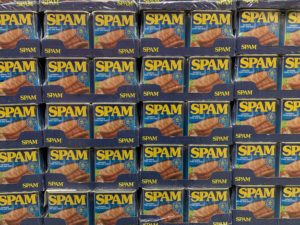Part 3: The Medium
3.2.2 Newsletters
Learning Objectives
- To identify how newsletters can be used to communicate risk.
- To highlight key considerations when formatting and scheduling a newsletter.

It seems like every organization or business has an electronic newsletter. However, if you can get yours to stand out from the rest, regular email contact to a select audience can be a powerful communication tool. Options for this medium range from a simple, branded email to more sophisticated tools like MailChimp. While it may seem like an easy thing to plan and launch, here are a few things you should consider when thinking about communicating via newsletter.

What action do you want?
Think about the purpose of your communication strategy (i.e. your mission). Are you trying to deliver information straight to your audience’s inboxes or are you hoping to direct them to other content, such as a website or a YouTube video? Are you trying to keep your audience in the loop about ongoing developments of an initiative? Understanding what it is you want your audience to do when they receive your newsletter can help you decide what it should look like and whether this is the right medium for your purposes.
Think about frequency carefully
We’ve all unsubscribed from annoying, repetitive marketing emails — don’t let your newsletter become a nuisance. It’s important to understand how much content you will be producing, or what you need from your audience, to know how often to schedule your newsletter. Don’t create a weekly update if you don’t anticipate being able to make each newsletter impactful, interesting, and engaging. Many organizations can get away with a monthly, or even quarterly, email update to their followers. The frequency will depend on your goals.
Less is more
The vast majority of people who open a newsletter will not read the whole thing. According to Campaign Monitor, most people spend less than 60 seconds on a newsletter and will only skim parts of it. As such, it is vital that newsletter communication follows the top principles of written communication: get to the point, use visuals to your advantage, make it accessible and stay on brand. Don’t feel like you need to cram everything into a newsletter and avoid using content just to fill space.
Where are your subscribers?
Likely the most difficult part of launching a newsletter is getting subscribers. As you should already have a good idea of who is in your audience, now you need to figure out how to get them subscribed to your newsletter. Anti-spam laws in Canada mean that you can’t just add anyone to your recipient lists; they have to give their consent to be contacted. You can use things like social media, your institutional networks, or partner organizations to get the word out about your newsletter. You can also encourage your existing subscribers to share with their friends.
Example
There are many, many newsletters to draw inspiration from. If you plan on using newsletters in your communication campaign, you may want to subscribe to a few effective ones. Here are some examples:
- Gen Squeeze: The newsletter from Generation Squeeze, a knowledge translation and research program at UBC, is a centerpiece of its KT strategy. The aim is to encourage participation in the organizations’ advocacy activities.
- The Ed’s Up: This short, bare-bones newsletter is from the brilliant science writer Ed Yong, currently at The Atlantic. Ed uses his newsletter to drive traffic to his online written content and share a bit of background about his articles.
- The Range Report: Written by journalist and author David Epstein, this newsletter is generally self-contained and is a space where David comments on current events with the use of research evidence.
- Brain Pickings: What began as a recurring email to a small group of close friends has become one of the Internet’s favourite places to learn something new. Maria Popova uses her newsletter to share a wide range of content and ideas which serves both to drive traffic to her website and deliver an interesting, shareable, and unique product.
Takeaways
Key Takeaways
- Newsletters are useful but you need to make sure yours stands out from the rest. Don’t add to the spam.
- There are many characteristics that can make for an ineffective newsletter. Fortunately, most of them can be avoided by thinking clearly about the problem you are addressing and the action you are trying to inspire, and by being familiar with the general rules of good written communication
Media Attributions
- hannes-johnson-mRgffV3Hc6c-unsplash © Hannes Johnson is licensed under a Public Domain license

